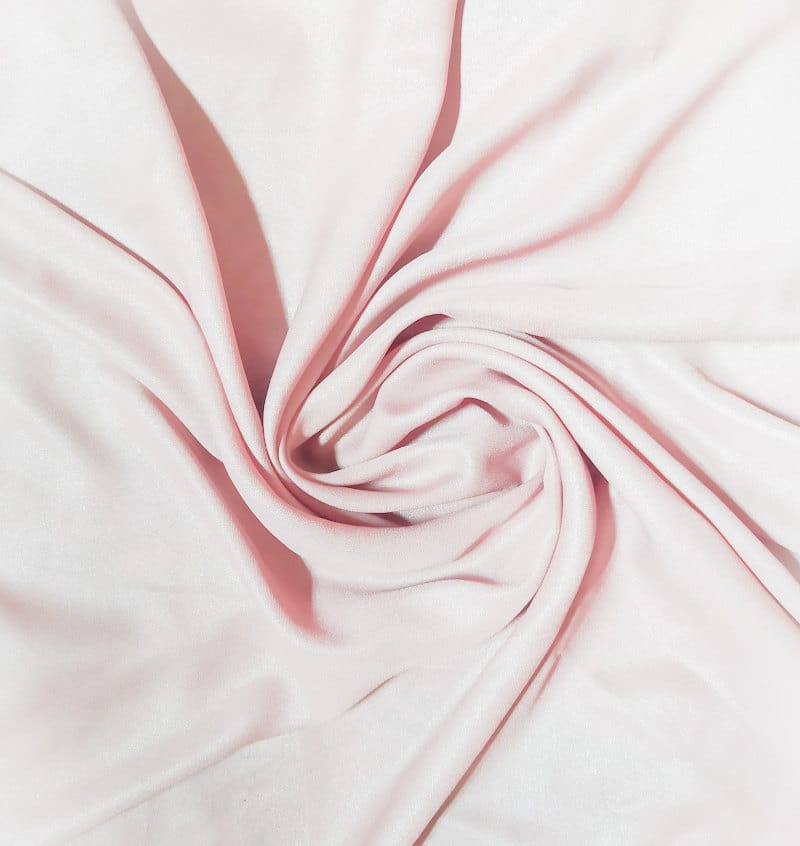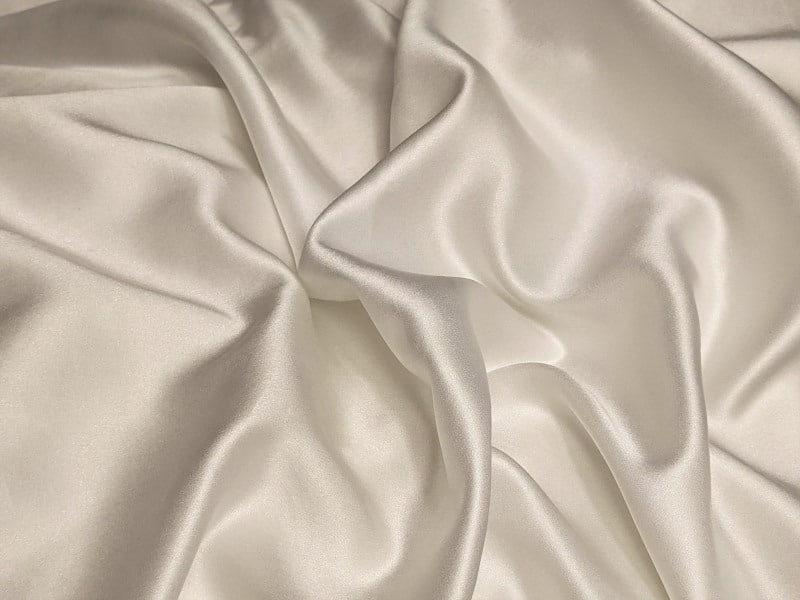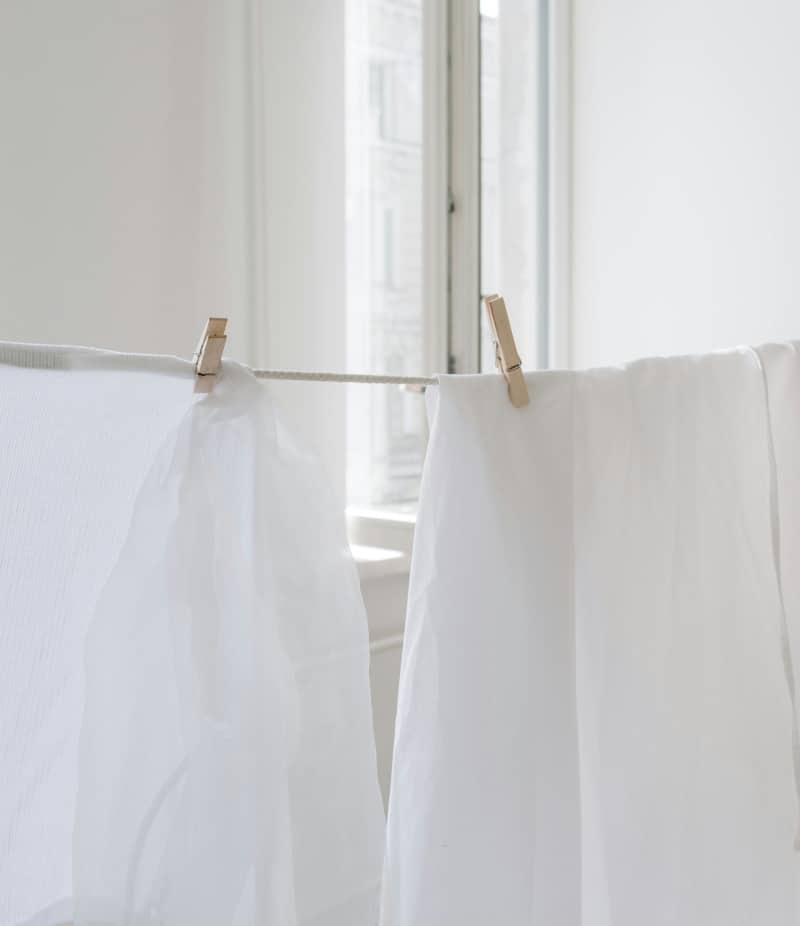Rayon Fabric: How Sustainable Is It?
Rayon is both a popular and common material, but how sustainable is rayon fabric? Thanks to awareness surrounding the negative effects of fast fashion on the planet, people are increasingly questioning how Earth-friendly various materials are.
For instance, while cotton is high-quality, it uses up a lot of water. Research has also found polyester to be the equivalent of plastic. Generally, textiles can be broken into categories of synthetic and natural. However, there are some that fall in between, like rayon.
Rayon is semi-synthetic, coming from a mixture of chemical treatments and natural sources. As a whole, it starts out pretty sustainable, but the process does quickly alter, making many people question its eco status. Continue reading as we dive further into what rayon is and whether it is environmentally sound.
What Is Rayon Fabric?
Rayon is a material used widely in everything from clothing to bedsheets and more. It is made from natural ingredients like bamboo and beech trees. However, rayon undergoes an intense chemical process. This is to make it a manufactured fiber.
The material sounds sustainable, but it is this chemical process that alters its environmental status relatively quickly.
There are three main types of rayon fabric. These include modal, lyocell, and viscose rayon. You’ve likely seen some of these names previously on your clothing tags.
Viscose is a semi-synthetic type of rayon fabric. It is created from wood pulp. Wood pulp is often used as a silk substitute. This is because it has a similar smooth feel and drape to that of a luxury fabric.

It is a very versatile fabric with many different uses. Viscose rayon can be used for cord, clothing, and much more. Because of this, it is the most common type of rayon you will find.
However, it is also the most likely to lose its shape or shrink during the washing process out of the three types. The second type is lyocell which is created using beech trees.
The production process to create this fabric is more environmentally sustainable than with the other two types of rayon because it uses fewer chemicals. It is very similar in feel to linen or cotton.
In fact, lyocell is often mixed with these fabrics. Out of all the types of rayon, lyocell is the most absorbent. This is what makes it so appealing because it absorbs moisture from the skin while still feeling cool and dry.
The last main type of rayon fabric is modal, which is a semi-synthetic fabric. It is made from beech tree pulp and is primarily used for household items, sleepwear, clothing, and underwear.
It is thought to be a more luxurious fabric than the others, and because of this, it comes at a higher cost. Modal is even more expensive than that of viscose or cotton. It is generally blended with other materials like spandex and cotton to add further strength.
How Is Rayon Fabric Made?
Rayon is created from wood pulp. Its fabrication involves many chemical processes that are quite intense. Some of the chemicals used to create rayon include sulfuric acid, acetone, caustic soda, ammonia, and carbon disulfide.
It is produced by the dissolution of cellulose solution. Generally, the fabric is created in facilities that also offer other kinds of semi-synthetic materials like modal, lyocell, and viscose.
The cellulose extracted from the wood pulp is transformed into a soluble compound using strong chemicals and acids. Then, a heated mechanical spinneret with tiny holes is used to form filaments of regenerated cellulose from the solution. This kind of extrusion is known as wet spinning and creates multiple continuous filaments.
The polymer is then dissolved and extracted through numerous thousands of holes into washing rolls, drying rolls, and a large spin bath. The fibers are then cooled down, washed, purified, and extended to create long filaments.
Then, they are ready to be spun into yarns. These are then woven into fabrics by textile manufacturers. The cellulose processing and extracting are what makes many people question just how environmentally friendly rayon fabric is.
It is a cheap fabric that comes out comfortable, lightweight, and soft. The fibres are water-absorbent and resident to mildew and moths. In saying that, the material cannot resist high temperatures and have low thermal stability. This means rayon fabric pieces will lose longevity when exposed to direct sunlight or UV light.
Is Rayon Fabric Sustainable?
Unfortunately, rayon material cannot be considered environmentally sustainable. This is because it negatively affects the planet in a multitude of ways. The natural cellulose used to create rayon is sourced from already receding rainforests.
It is the exact same businesses that are stripping rainforests for palm oil that are chopping down entire ecosystems to get raw materials to create clothing pieces. Not only that, but the chemical process of creating rayon is also very controversial.

It is toxic and does not meet the Environmental Protection Agency’s (EPA) standards. There is also speculation that people working in rayon factories are exposed to a greater risk of stroke, heart disease, and nerve damage.
If these chemicals manage to get into the water table, the entire surrounding community can be poisoned. For this reason, the majority of rayon fabric is created in Asia. The regulations are much more relaxed here.
There have been some incidents of rayon poisoning local populations, staff, and bodies of water. The material itself is created from plants, but this cannot alone make it sustainable. Due to the chemical process and how it threatens precious ecosystems, it is best to avoid rayon.
It is also important to consider the impact the fabric will have when it breaks down on the planet, as the chemicals in it will likely be released and could threaten our health and oceans.
Rayon Fabric vs Cotton
Cotton is often marketed as a sustainable fabric. It’s true cotton has great longevity, but it drinks up a lot of water, and there are also issues surrounding cotton farmers’ rights. Read below for the key differences between rayon fabric and cotton.
Where They Originate
One of the biggest differences between rayon fabric and cotton is their origin. Cotton is derived from the cotton plant, while rayon comes from wood chips from a range of different trees.
Their Fibres
Another key difference between the two fabrics is their fibres. Cotton’s fibres are all-natural, and rayon’s are part natural and part synthetic.
The Strength Of The Fabrics
The actual strength of the fabrics also varies slightly. Cotton is stronger than rayon and remains strong while wet. By contrast, rayon is not as strong and loses a lot of its strength when it is wet. When clothing made of the material is wet, it can often become misshapen and lose its durability.
Durability
Speaking of durability, cotton is well renowned as a sturdy fabric. Rayon, on the other hand, is not as sturdy.
Applications
The cotton material also has far more applications than that of rayon. For rayon, it has a limited number and is much better when blended with other fabrics. In fact, it is very common for it to be mixed rather than sold as a standalone fabric.
Manufacture
In terms of the manufacturing process, both are very intense. Cotton requires a considerable amount of water. According to The World Counts, it takes 10,000 liters of water to create just 1 kilo of cotton. What this means is it takes roughly 2,700 liters to make one cotton t-shirt.
With that in mind, the material has a large water footprint. Not just that, but cotton farmers also use a lot of pesticides to grow cotton. The National Wildlife Federation reports for every nine ounces of cotton (the average amount for a t-shirt), growers use roughly 17 teaspoons of chemical fertilizers and almost a teaspoon of active ingredients.

These include insecticides, defoliants, herbicides, and pesticides. All of which have been found to have adverse effects on human health. Rayon also requires a lot of resources. In particular, water, energy and other various chemicals. So, unfortunately, both fabrics use quite a lot of resources and, therefore, deplete the Earth’s resources.
Colourfastness
In relation to its colour-holding abilities, cotton does fade but not nearly as quickly as rayon fabric fades.
Flammable
Cotton is not as vulnerable to fire. Rayon, by contrast, is, unfortunately, highly flammable.
Rayon Fabric vs Modal
Modal is a type of rayon and is thought to be one of the most sustainable textiles on the market together. It is the second generation of rayon fabric. So how do they differ? Let’s dive into this further below.
Strength And Durability
Both fabrics have virtually the same properties. However, modal has the additional benefit of having strength when it is wet. This extra strength means it can be machine-washed and tumble-dried without the fabric stretching or shrinking.
Colourfastness
As mentioned above, rayon fades very quickly. Modal textiles hold colour very well and usually do not fade or grey over time.
Touch And Feel
Modal is also much softer than rayon. This makes it very good for intimate body contact. It has been described as being ‘as soft as a feather’ and ‘the softest fiber in the world’. For this reason, modal is often used to create athleisure clothing and underwear.
Water Absorbency
Modal is also 50 per cent more water-absorbent per unit volume than cotton or rayon. It is designed to dye similar to cotton and is colour-fast when washed in warm water. Even with repeated washing, the fabric remains soft, absorbent, and supple.
Vegan and biodegradable
The modal textile is also claimed to be both vegan and biodegradable, unlike cotton or rayon. However, its biodegradability and vegan status may change if it is blended with other fabrics.
Blendability
Modal is also very easy to blend with other fabrics.
Manufacturing
The process of creating modal material is much less chemically heavy than that of rayon. It also requires less water. For this reason, the fabric is often recommended as a substitute for cotton. The process of creating it is very similar to viscose rayon, but it is an updated version that removes some of the harmful and wasteful elements.
Is Modal Sustainable?
After reading all of this, you are probably wondering once and for all, ‘is modal sustainable?’. The manufacturing process to create rayon is slightly more eco-friendly than to create viscose rayon. In saying that, the process still uses carbon disulfide on the cellulose during the process.

Carbon disulfide is a well-known neurotoxin and is introduced into the environment via air and contaminated water during the rayon manufacturing process. When it enters the ecosystem, it can harm animal life and cause serious health issues in human beings. Those who are most exposed to it during the rayon production process are those who create the fabric.
As a result of the exposure, they may experience kidney damage, liver damage, psychosis, blindness, coma, or even death due to it being such a toxic chemical. In the past number of years, manufacturers have taken steps to make the process more eco-friendly and safer for workers.
However, its sustainability status still does depend on the harvesting and cultivation practices used. Unfortunately, most of the tree material used to create the fabric is wasted. Only the cellulose from the trees is used, which means the remainder of the tree material is discarded. With all this in mind, it is difficult to say that rayon and any of its derivatives are ethical or sustainable.
Key Take Aways
As we become more conscious about our impact on the planet, many of us wonder which fabrics are the most sustainable. Unfortunately, rayon does not meet the criteria to be an environmentally friendly material.
The process of creating it is wasteful, and lots of chemicals are used throughout the process, which is dangerous for the ecosystems and our health.
Not to mention, the material is not very durable, which could also result in consumers discarding it. From here, rayon could find itself in our landfills, where it could further pollute the planet.